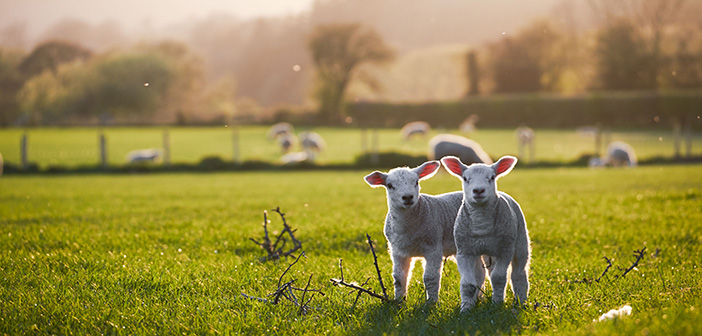Farmers are being encouraged to not overlook the critical role of trace elements when considering ewe nutrition in the run-up to lambing.
According to Neil Ashwell, head of agriculture at Brinicombe Agri, while only needed in small quantities, essential trace elements play a fundamental role in supporting good foetal development, an easier lambing, improved lamb vigour at birth and the production of high-quality colostrum.
“Lambing can be a stressful time for both the ewe and lamb and close attention to nutrition will pay dividends, helping to reduce the risk of problems. This means not only meeting the ewe’s requirement for major nutrients, such as protein and energy, but also supporting a good trace element status,” he said.
Encouraging an easier lambing
Mr Ashwell continued: “One way to reduce the number of ewes needing assistance at birth is to encourage a wetter lambing. This involves the production of healthy mucous membranes, which act as a natural lubricant, and can be stimulated through the supplementation of vitamin A.”
Mr Ashwell said that selenium is also a key trace element of importance.
“Selenium works alongside vitamin E to trigger the utilisation of brown fat reserves in the lamb,” he said. “This initiates the shivering mechanism which encourages the lambs to suck, giving them more ‘get up and go’.”
Stimulating colostrum production
While getting the lamb up and sucking quickly to ensure sufficient colostrum intake within the first seven hours of life is key, Mr Ashwell highlighted the importance of colostrum quality in achieving adequate protection.
He said: “High quality colostrum will provide lambs with a good dose of maternally derived antibodies which is crucial for fighting disease and infection in their first few weeks of life. The developing immune system of the lamb can be further strengthened through the transfer of selenium and vitamin E via the colostrum.”
In addition to micronutrients, providing the ewe with extra protein and energy is vital to stimulate the production of sufficient volumes of good quality colostrum. But for the best results, enhanced nutrition needs to be offered ahead of the lambing period.
Mr Ashwell said that the introduction of nutritional buckets up to eight weeks ahead of lambing is a good way to meet the heightened demand for major nutrients and essential trace elements and vitamins during this time.
Cornish farmer improves lamb vigour
Cornish farmer, Richard Northey, said he is reaping the benefits of improving the trace element status of his ewes pre-lambing.
Since introducing Brinicombe Agri’s Pre/Post Lambing Tubs to tackle lambing problems, Mr Northey, who farms 1,050 breeding ewes across 550 acres on Bodmin Moor, has seen an increase in live lambs born with noticeably more get up and go.
“Since using the Pre and Post Lambing (PPL) Tubby, we’ve noticed a real difference in lamb vigour. The ewes do not take long to lamb, lambing’s are much wetter, and the lambs are livelier and up and sucking much quicker, which is really important when farming on the exposed moor,” he said.
“Prior to introducing the buckets, we were experiencing problems with dopey lambs and it’s great to now see freshly lambed ewes walking away and the lambs keeping up.”


